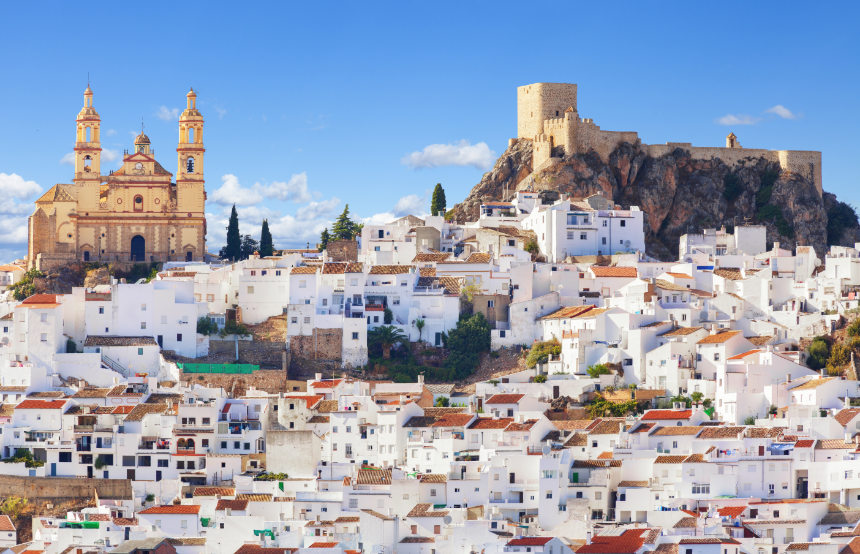Spain has long been touted as the ideal summer holiday destination for Brits, with its heavy dose of seductive culture, pristine beaches and balmy temperatures. Yet Croatia’s arrival on the scene and growth in popularity has only served to complicate things when it comes to choosing a holiday destination. The country’s equally awe-inspiring landscapes, age-old architecture and world-class cuisine tempt travellers to the crescent-shaped country. Croatia vs Spain promises to be a close contest; the Adriatic vs the Balearic, Barcelona vs Dubrovnik, tapas and sangria vs crni rižot (black risotto) and rakija (fruit spirit). Lucky for you, our travel experts are well-versed in both, so read on to find out who triumphs in the contest between these two idyllic summer holiday destinations.
Landscapes & Scenery
Comparing Croatia and Spain’s landscapes is near impossible, as they both possess scenery of outstanding natural beauty, punctuated by charming towns and picturesque villages. Spain’s most famous cities, Madrid and Barcelona, are teeming with architectural masterpieces, while scattered throughout the country’s interior you’ll find an array of postcard-perfect traditional towns. In Croatia, Dubrovnik’s Old Town hails straight from the pages of a medieval fairy-tale, with its coherent collection of limestone buildings and historic city walls. It’s easy to see why the country has provided the backdrop for numerous productions (including Mamma Mia and Game of Thrones), as the island-dotted coastline is suitably photogenic. Croatia is also home to some stunning national parks, the most famous of which is the Plitvice Lakes National Park, known for its chain of 16 terraced lakes connected by a series of 90 waterfalls.
The abundance of both natural and man-made beauty present in both countries makes it tough to determine a clear winner. Arguably, Spain’s cities have slightly more to offer in terms of culture, however Croatia’s breath-taking coastline and national parks help to close the gap. A point to each, kicking off this Croatia vs Spain contest at one all.
Food
Spain’s gastronomic scene hardly needs selling, as its world-famous tapas tradition has been replicated in numerous other countries. Alongside these pint-sized dishes, Spain boasts mouth-watering paella, fragrant sangria and indulgent churros. You’ll find outstanding Spanish food in every city, however San Sebastian is the self-proclaimed culinary capital of the country, making it a must-visit for avid foodies. Home to both innovative restaurants and authentic Pintxos (Basque tapas) bars, the locals celebrate their culinary traditions with a number of food festivals throughout the year. Croatia’s cuisine may be less well-known than Spain’s, yet its menu of creative dishes is equally inviting. Offerings revolve around fresh seafood, hearty stews and a variety of pasta dishes, blending Mediterranean, Greek, Turkish and Slavic influences, with the wonderfully salty crni rižot (black risotto) as its most famous dish.
While both countries’ cuisines promise to tantalise your tastebuds and sate every appetite, Spain’s well-established food scene and expansive smorgasbord of dishes mean that it slightly takes the cake in this category. Croatia remains a champion for fresh seafood and fruity cocktails, however, so this contest was a close one! 2-1 to Spain.
Climate
Both Spain and Croatia enjoy Mediterranean climates, characterised by hot, dry summers and rainy, cool winters. The temperature in Spain rarely drops below 23°C and can creep above 40 °C in the summer, while Croatia’s summer temperatures range from 26°C to 30°C. Spain enjoys around 3,000 hours of sunshine per year and Croatia isn’t far behind, with Hvar receiving 2,760 hours.
Spring and summer are undoubtedly the best times to visit either country, however their evenly-matched climates make it impossible to distinguish between them for this category, bringing the score to 3-2 to Spain.
Beaches
When it comes to beaches, it’s no secret that both countries are equipped with spellbinding shorelines, so the one you choose may depend on personal preference. Expect sugar-soft blonde sand lapped by idyllic indigo ocean in Spain, where some of our favourite beach locations include the Costa Brava, Valencia and the Balearic Islands. Croatia offers beaches of a different kind; although just as stunning, on a lot of the beaches you’ll find pebbles instead of sand. While the rocky coastline may not be as comfortable for sunbathing, the turquoise shallows are perfect for swimming in.
For swimmable gin-clear waters and more secluded spots, Croatia is the sure-fire winner, yet it’s hard to ignore the accolades of Spain’s beaches, as a number have been ranked among the best in the world. Another point to Spain, bringing the score to 4-2.
Unmissable Experiences
Onto the final round of this closely contested competition: unmissable experiences. Madrid and Barcelona are great cities for art-lovers and architecture aficionados, with a number of world-renowned galleries and buildings. For keen oenophiles, Rioja is another stop you won’t want to miss. Spend time with an expert sommelier, touring one of the region’s 500 wineries and sampling its finest namesake wine. Spain is also known for its vibrant festivals, such as La Tomatina in Valencia, which is certainly an experience like no other. Touring Dubrovnik’s Old Town Walls is an unmissable attraction in Croatia, along with exploring Hvar Town, while history buffs should visit the historic city of Pula for well-preserved examples of Roman architecture. With over 1,000 islands adorning the coastline, an island-hopping boat trip is perhaps one of the most special things to do in Croatia.
There’s no doubt that Spain offers plenty of unmissable things to do, but for some truly extraordinary away-from-it-all experiences, the Adriatic superstar promises to deliver on all fronts. Croatia earns a well-deserved point for this round, taking the final score of this Croatia vs Spain contest to 4-3, and with only point between them, we’d argue that they’re both worth adding to your summer holiday bucket list.
Written by Luisa Watts














